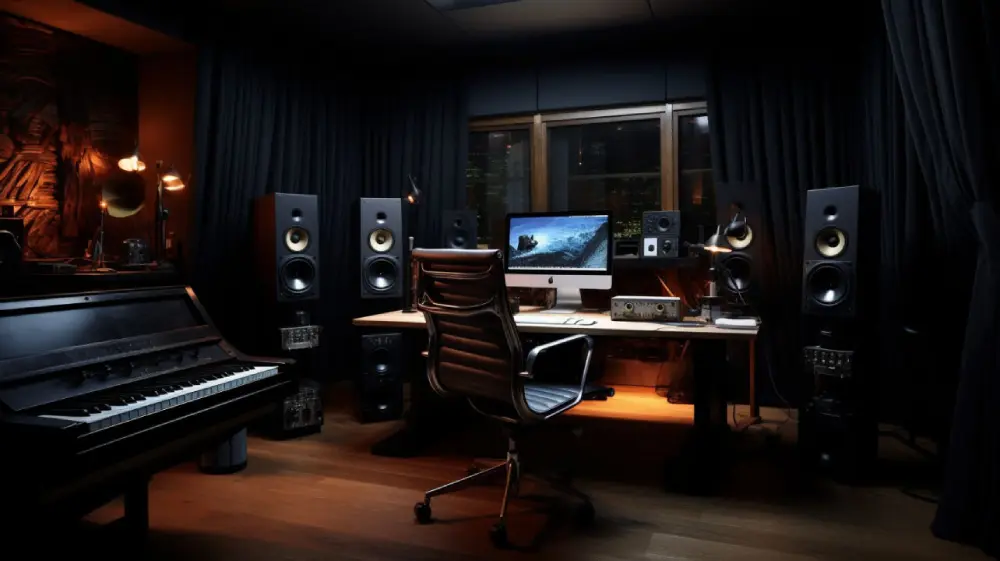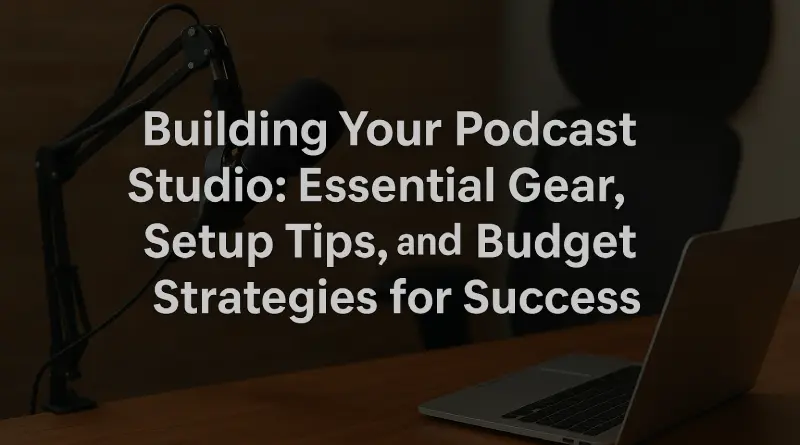Building Your Podcast Studio: Essential Gear, Setup Tips, and Budget Strategies for Success
With podcast listeners in India more than tripling between 2024 (105 million on average) and 2025 (projected to grow to 200 million) (per the India Brand Equity Foundation), and with the proliferation of digital tools that allow individuals to create top-quality content in the comfort of their own homes and sell it to interested parties at premium prices, there is no better time than the present to become an audio content creator. The market in this area is sized at USD 0.62 billion in 2024 with an approximation of hitting USD 2.6 billion by 2030 at a CAGR of 25% (Marktel Advisors). Still, there are loads of intending creators who are unsure because of setup fantasies. Podcast studio development does not call for a fortune and attractive workplaces but wise decisions to achieve appreciable expert audio. This manual distills the fundamentals, intertwining international best practices with local country-specific practices such as resolving sound pollution in cities and taking advantage of low-cost local resources. Using the expertise of reliable sources such as experts at Riverside.fm, Podcast Rocket, and the podcasting classes at Udemy, we will prepare you to launch without going bankrupt.
Step 1: Selecting the Ideal Space
The room in itself is the basis of your studio. Find a calm, small room (ideally 10×10 feet or smaller) so that there is minimal reverberation echoing off the walls—reverb in a large room becomes pronounced, according to acoustics advice at Riverside.fm. In India, 70 percent of the urban populace are exposed to noise above 55 decibels (Central Pollution Control Board statistics), which means that one should avoid rooms that face the street or are close to appliances. An extra wardrobe or seaside room is wonderful.
Specific tip: Go to evening recordings in urban areas such as Mumbai or Delhi to record at a time when there is less traffic, and cut down background noise by up to 20 percent (World Health Organization noise research). Soft furnishings in and around carpeted floors absorb sound. Budget hack: Household items such as blankets over windows can help damp things initially, but only for 80 percent of beginners, according to a course on Udemy called the “Power Podcasters.”
Step 2: Core Equipment Essentials
Quality gear ensures crisp audio, but prioritizes needs over hype. Start with these must-haves:
- Microphone: Dynamic mics like the Shure SM7B (₹30,000-₹40,000) excel in noisy environments, rejecting background sounds. For budgets under ₹5,000, try the Audio-Technica AT2020. Podcast Rocket emphasizes USB mics for plug-and-play ease, ideal for solo Indian creators producing in Hindi or regional languages.
- Headphones: Over-ear models like Sony MDR-7506 (₹7,000) provide accurate monitoring. Avoid Bluetooth for latency issues during editing.
- Audio Interface or Mixer: The Focusrite Scarlett Solo (₹10,000) converts analog to digital seamlessly. For multi-host shows, a Rodecaster Pro II (₹50,000) offers built-in effects.
- Computer and Stand: A mid-range laptop (Intel i5, 8GB RAM) handles recording software. Add a boom arm (₹1,000-₹3,000) for mic stability.
Local context: With India’s e-commerce growth, sources from Amazon or Flipkart for deals—prices dropped 15% in 2025 due to local manufacturing (Statista). Unique tip: In power-unstable areas, invest in a UPS battery (₹2,000) to prevent mid-record blackouts, a common woe for 40% of rural creators (TRAI reports).

Step 3: Sound Treatment and Proofing
Do not mix up soundproofing (rejection of outside sounds) with treatment (enhancement of internal acoustics). To proof, caulk the windows with weatherstripping (1/4000), and install mass-loaded vinyl sheeting (1/4000 in a small room). Cure: Acoustic panels (2,000-10,000) and bass traps can be used to dampen echoes–Riverside.fm suggests covering 30-50 percent of the walls.
Lesson learned at Podcast Rocket: Do it yourself. Bass traps out of rockwool (1,000) are half the cost of store-bought units and much more suitable in India, where warm, high-humidity climates will prematurely deteriorate foam. Records indicate that treated rooms reduce reverb by half (AES Journal), increasing listener retention—a factor that is critical since Indian podcasts last an average of 20 minutes (Spotify Wrapped 2025).
Step 4: Software and Accessories
There are free programs such as Audacity or GarageBand that are sufficient for editing, but go professional by using Adobe Audition (1,500/month). The Riverside.fm cloud platform (free tier) provides the possibility to conduct interviews remotely, which is crucial in such a geographically vast country as India. Use pop filters (as available at 20 500) and shock mounts (as available at 20 1000) to cut out plosives.
Exclusive knowledge: In multilingual pods, use AI such as Descript to auto-transcribe Hindi/English to save editing time by 70 percent (Descript figures). This reaches wider in India, where 60 percent of the listeners want vernacular content (KPMG report).
Step 5: Budgeting and Scaling
Begins setup: 15,000-30,000 (mic, headphones, software). Medium: 50 to 100,000 rs on interfaces and treatment. Pro: a multi-mic rig worth 200,000+. The Udemy course emphasizes how to start small—80 thriving, dominating pods were started below 20,000 in value. Grow revenues to scale; the ad market in India is to reach 500 cr by 2025 (FICCI-EY).
Pro tip: Do a test during real game sessions; make adjustments according to feedback. Making it off Spotify, Anchor, or YouTube comes next, with reliable quality.
Installing a podcast studio scenery will enable creators during an audio revolution in India. Care about the basics, localize, and iterate—your message has a potential audience of millions. Are you set to record? Pledge the plunge.
Disclaimer
The information presented in this blog is derived from publicly available sources for general use, including any cited references. While we strive to mention credible sources whenever possible, Web Techneeq – seo company in Mumbai does not guarantee the accuracy of the information provided in any way. This article is intended solely for general informational purposes. It should be understood that it does not constitute legal advice and does not aim to serve as such. If any individual(s) make decisions based on the information in this article without verifying the facts, we explicitly reject any liability that may arise as a result. We recommend that readers seek separate guidance regarding any specific information provided here.

